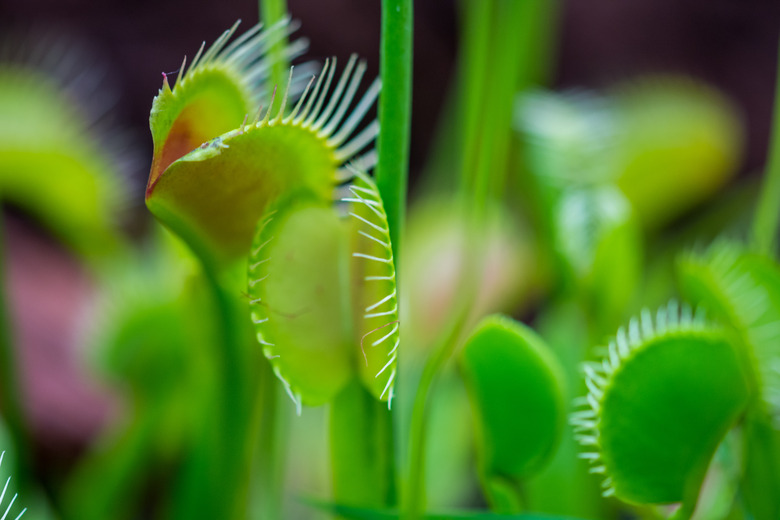Where Do Venus Flytraps Grow Naturally?
The Venus flytrap plant is a carnivorous plant that catches and digests mainly insects to supplement its nutrition. It catches an insect by closing its trap when the insect triggers the hairs on the plant. The Venus flytrap has a rather small area of natural habitat and is a popular plant grown by gardeners.
Habitat
Habitat
The Venus flytrap is found naturally in the United States. It is found in bogs, swamps and other nitrogen-poor environments. The plant is found naturally mainly in North Carolina and South Carolina, but there have been populations in northern Florida and in New Jersey. Despite what many other people think, the Venus flytrap is actually not a tropical plant and requires a dormant period during the winter to survive.
Indoor Cultivation
Indoor Cultivation
To successfully care for a Venus flytrap as a house plant, one must mimic its natural habitat as closely as possible. Normally, the soil required for the plant to thrive must be about 70 percent peat and 30 percent coarse pumice. The soil must be kept very moist at all times. During the fall and winter months, the plant should be kept at 40 to 50 degrees Fahrenheit so it may go dormant and grow again in the spring.
Diet
Diet
Since the Venus flytrap grows in nitrogen-poor soil, it must catch insects and spiders to supplement its nutrition. If a flytrap is grown indoors, the plant may catch two to three bugs that unfortunately land on it every month. If the flytrap needs to be fed bugs, the bugs should have died of natural causes and not by chemicals. The Venus flytrap is extremely sensitive to chemicals and most will have a toxic and sometimes fatal effect.
Digestion
Digestion
The insides of the Venus flytrap's trap is lined with many little hairs. The plant knows that an insect is on the trap when it steps on multiple hairs. This mechanism prevents the flytrap from needlessly using energy to close the trap. The trap closes when the insect is unable to wriggle free and releases enzymes from its lobes to digest the trapped bug.
Conservation
Conservation
The Venus flytrap is cultivated in homes and gardens in greater amounts than the number remaining in the wild. Many plants are dug up from their natural habitat, then sold to gardeners. The best method to conserve the plants is to buy the land which they grow on and protect it. Even though the flytrap could be kept longer in cultivation, cultivating the plants exert an unwanted and many times accidental selection process that weakens the plant.
References
Cite This Article
MLA
Writer, Contributing. "Where Do Venus Flytraps Grow Naturally?" sciencing.com, https://www.sciencing.com/do-venus-flytraps-grow-naturally-5144973/. 22 November 2019.
APA
Writer, Contributing. (2019, November 22). Where Do Venus Flytraps Grow Naturally?. sciencing.com. Retrieved from https://www.sciencing.com/do-venus-flytraps-grow-naturally-5144973/
Chicago
Writer, Contributing. Where Do Venus Flytraps Grow Naturally? last modified March 24, 2022. https://www.sciencing.com/do-venus-flytraps-grow-naturally-5144973/
